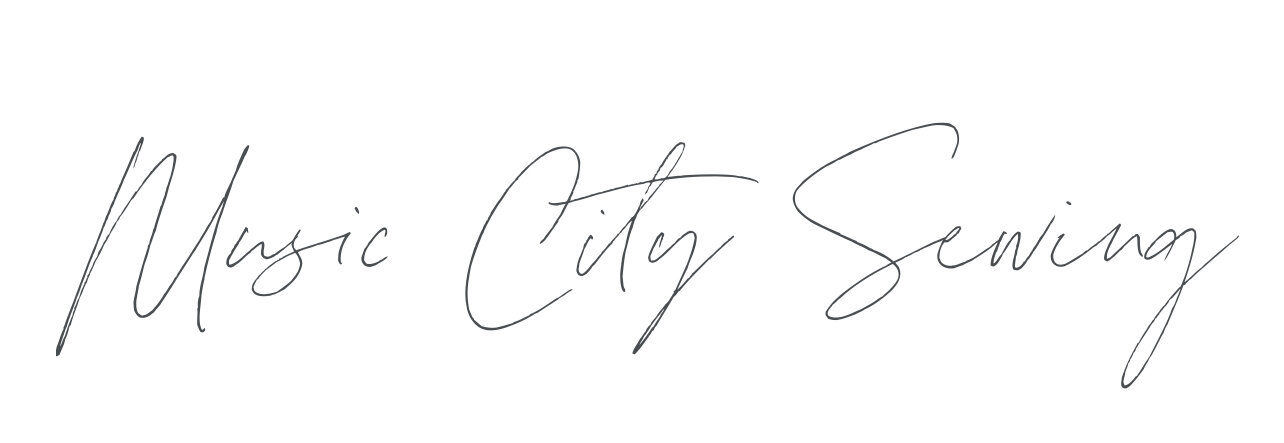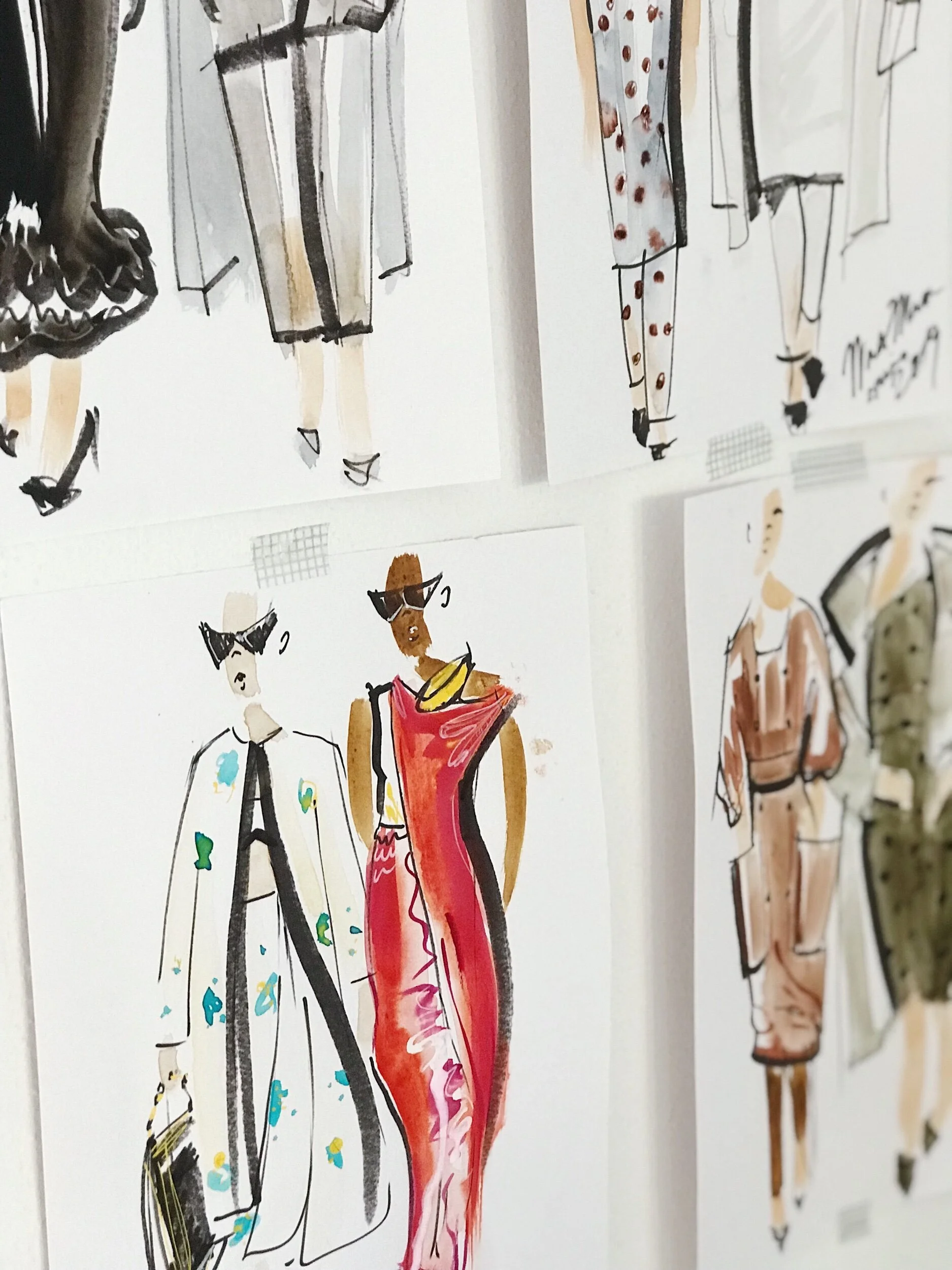Let me guess... You're probably here because someone working in fashion asked you to send over your tech pack.
And you panicked, because you immediately thought...
What’s a tech pack?
Tech packs are universally understood document that pattern makers, seamstresses, pattern graders, and manufacturers use to help you design and create your garment.
This is the one thing you need before you ever hire help, no matter which step you're at in the process.
I've got your back. This seven-page tech pack template has everything you need to prepare your design for patterning, sampling, grading, and manufacturing.
Without a tech pack, there's no hope for you.
Just kidding... but also, I'm just a little bit serious. Fashion incubators and manufacturers receive hundreds of emails every day, and since no one can read your mind, their responses are contingent on you knowing what to ask for, and what step you’re at in the whole designing process. So having a tech pack for each style in your fashion line allows your new team to get on the same page as you in terms of your expectations for fit, aesthetic, and construction quality.
I have so much to say about this topic, and why it's important to have a tech pack before ever hiring, that I recorded a podcast all about it if you'd prefer to listen.
Listen here:
If you’ve ever visited a foreign country that primarily speaks a different language than you, you’d look pretty silly if you didn’t learn a few phrases of the local language to get around, wouldn’t you?
The first time I used my passport, I went to three countries in one trip. While England and Scotland both spoke English, France, obviously doesn't speak english as a primary language. And they definitely will not speak English, if you don’t attempt to speak French first. With mine and my family’s French skills being less than lackluster, and our untraveled assumption that everyone would speak English, let’s just say, we weren’t received warmly. I was in the eighth grade and didn’t know any better, we didn’t have apps translating our every word back then, and even if we did, I don’t think it would’ve mattered seeing as the night we flew to Europe was the night the US went to war on Iraq, so one could say it was a slightly politically charged time for us to be taking a sweet little Girl Scout trip.
Whether you’ve spent time in countries where you don’t speak the language or not, you can probably understand that feeling I had, as a 14 year-old, standing on a street corner desperately asking for directions to a public bathroom, only to be met with sharp glances and vacant stares. Let me repackage it a bit for you. If you’re a designer, these next questions are for you:
HAVE YOU EVER FELT PUSHED ASIDE OR IGNORED BY A MANUFACTURER?
HAVE YOUR INSTRUCTIONS FOR HOW TO MAKE SOMETHING MET WITH GLAZED OVER, VACANT EYES OR EXPRESSIONS COMING FROM THE PEOPLE OR TEAM YOU’VE TRIED TO TRAIN TO MAKE THINGS FOR YOU?
HAVE YOU HIRED HELP IN MAKING YOUR DESIGNS, BUT RECEIVED SOMETHING THAT WAS NOTHING LIKE WHAT YOU’D INSTRUCTED OR DESCRIBED?
HAVE YOU TRIED TO MOVE YOUR FASHION SKETCHES FORWARD, AND GOTTEN THE ONE-LINE EMAIL RESPONSE, ASKING YOU TO ATTACH YOUR TECH PACK, AND RESPONDED THAT YOU DON’T HAVE ONE, AND THEN BOOM, THE MANUFACTURER DISAPPEARED WITHOUT EVEN A CLOUD OF SMOKE??
Friend, this all comes down to the tech pack.
Every manufacturer in the world requires a tech pack to reverse engineer your design into actionable steps for their entire team.
It’s a fail-start without one, and those manufacturers will go radio silent on you until you show up, tech pack in hand. Because until you’ve done that- you won’t be taken seriously and they can’t assign a team or get your product on the sampling or manufacturing line.
Having a tech pack will help you cut through the noise, bring your designs clarity, create an action plan for hired help, guarantee consistency in the end result, and best of all, prepare your brand for GROWTH.
The fastest, easiest way to do this, is to have a tech pack for every design you plan to produce.
As makers or designers, we tend to keep everything in our heads. But the moment we get sick, need help, want to grow and delegate or outsource the work…. It doesn’t work. Chaos ensues.
WHAT GOES IN A FASHION TECH PACK?
A tech pack is a digital document that communicates EVERYTHING ANYONE would need to know about how to make your garment or accessory. It’s not an order, it’s not a brand guide, and it looks nothing like the home sewing instructions you’d see in a downloaded or store bought pattern. It always has multiple pages, whether it’s a pdf version or an excel document, and includes at least, but not limited to the following:
A technical sketch or a flat lay sketch (you’ll hear it called either one)
Garment callouts or a spec sheet
A cutters must (this is the document that a cutter would read before ever touching the fabric. This lets them know how many of each pattern piece to cut out of what, whether it’s shell fabric, liner, trims, stabilizers and fusings, elastics, or cordings
A Bill of materials - also known as a BOM. This is the grid that includes every fabric or notion or trim used in making your garment. Your BOM clearly lists where you source each supply from, what it’s for, and how much you need of each of those things to make one garment. This way when you, or someone else, need supplies, you know exactly how much to order given the number and size of the batch you plan to make.
An order of operations - The issue with many tech packs we receive is that they’re not made by a seamstress. Now that sounds rude, but hear me out! If you don’t know how to make the garment, so you quickly fill out lackluster sewing instructions because you think your garment is simple. Problem is, you skipped a few steps in the preparation and now, your seamstress who trusted you is seam ripping and cussing you out under her breath because you just added 3 hours of labor to her already-long day. And guess what? She's going to charge you for those hours. So unless you're versed in this area, leave this blank and pay your seamstress to create a proper order of operations that you can take forward into manufacturing and keep everyone happy, including yourself.
THE DIFFERENCE BETWEEN A TECHNICAL SKETCH AND A PHOTO…
A seamstress can’t tell the hem from a photo and we shouldn’t have to guess.
Seams, hems, and finishings can be easily communicated within the flatlay sketch, as well as details that often get overlooked in simple photos due to varying fabric prints and colors.
THE DIFFERENCE BETWEEN LISTING OUT WHAT IS USED IN THE GARMENT, AND FILLING OUT A PROPER BOM...
No one knows which material you used on the binding of the zipper on the inside of a garment without looking and this isn’t how it should be. No manufacturer will sift through emails to figure out your colorways, or which zipper goes on which garment. By putting everything in the BOM for your design, you communicate clarity and efficiency, and ensures mistakes are few and far between.
A new assistant can step in and help you reorder your supplies if your bill of materials is clear and concise.
A cutter can cross check your bill of materials against their cutters must should something seem off. Oftentimes designers make a change in one area but not another, or the pattern doesn’t exist for stabilizers or interfacings because the cutter is meant to use the same pattern piece as the shell or the liner.
A seamstress can know exactly how long finishings like buttonholes would be simply by looking at the bill of materials and spotting the button size. Oftentimes, patterns leave these marks off due to supply chain changes or designers not finalizing certain pieces before they scale, and all of these little items become a bottle neck.
A seamstress can also know if a designer has thread preference, or stitch length & width expectations.
HAVE I CONVINCED YOU YET?
I’ve seen just about every iteration of a tech pack there is, and as a creative-minded person over the years, I've come to rely on data being presented in a way that the people reading these things (ie seamstresses) need to see it. My brick and mortar cut and sew business started building our own packs about a year ago in-house, and I began to see the need for a template.
We charge anywhere between $200-500 for our time to build tech packs for designers moving through our incubator, but if you know how to build one, and what to fill out, all you need is a good fashion tech pack template. If you want mine, just click below - you're welcome to start your own fashion designs using what we use in our actual brick-and-mortar manufacturing division.




